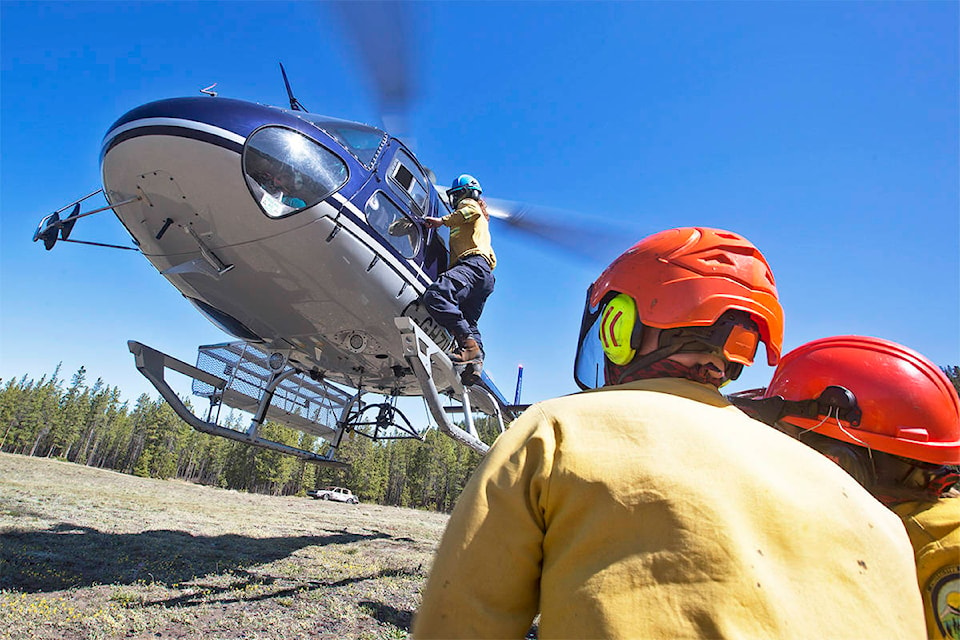Wildland firefighters face many unpredictable circumstances while battling blazes in some of the territory’s most remote terrain, which is why they train for all kinds of situations.
Hover entry and exit training with a helicopter, which Whitehorse crews were practising on May 22 near Chadburn Lake, is vital knowledge for firefighters should they ever be dropped off at a location without a prepared helipad or need to make a hasty retreat from a blaze.
“It’s important for us to know that our crews are able to do that in case we are in a situation of last resort where it is needed,” said Mike Fancie, Wildland Fire Management information officer.
The weight limit of a firefighter doing a hover exit or entry maneuver with an intermediate-sized helicopter, like the one used during training, is 220 pounds or 100 kilograms.
During training, the crews learn not only how to board and disembark a hovering helicopter, but also about the helicopter itself.
“There are a lot of details that have to be kept in mind that relate to the specifics about where it’s safe to be around a helicopter, what kinds of things you need to expect when you’re moving the doors around, what are safe things to grip, as well as how to communicate between yourself and other parts of your team and the helicopter pilot to make sure while all this is happening, and a helicopter is like a foot above your head, you’re able to ensure that everything is happening as safely as possible,” said Fancie.
To ensure this safety, crew members must position themselves on the ground in a way in which they can be seen by the pilot or the front seat crew member. They must also climb on and off of the helicopter as slowly and smoothly as possible to ensure that the pilot can retain control of the aircraft as the helicopter’s weight and centre of gravity changes.
Two main rules for doing the hovering maneuver, said Fancie, are to “make sure that you are always able to communicate with the pilot or the crew leader in the helicopter, as well as maintain three points of contact as you’re moving in or out.”
Helicopter hover entries and exits are not used very often in the field, said Fancie, since safety of the responders is first priority. If they can achieve their objective without a hovering helicopter, they will use that first.
“I think it does a good job of highlighting some of the unique challenges and the athletics skills of our crew members,” said Fancie. “It’s not something you’d normally think of when you think of things a firefighter would have to do.”
All Yukon government firefighters are trained annually for hover entry and exits.
Other training for the firefighters includes fireline and workplace safety, fire weather and behaviour, how to fight and patrol fires, how to use a radio, incident command, basic orienteering and survival skills, a fitness test, use of basic tools, and how to safely work heavy equipment, air tankers and helicopters.
Contact Crystal Schick at crystal.schick@yukon-news.com
